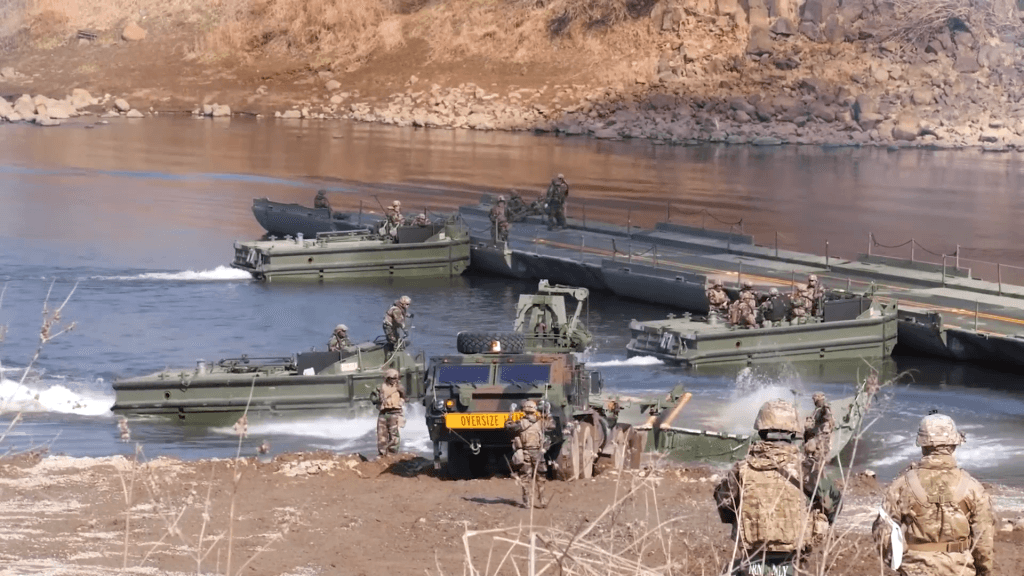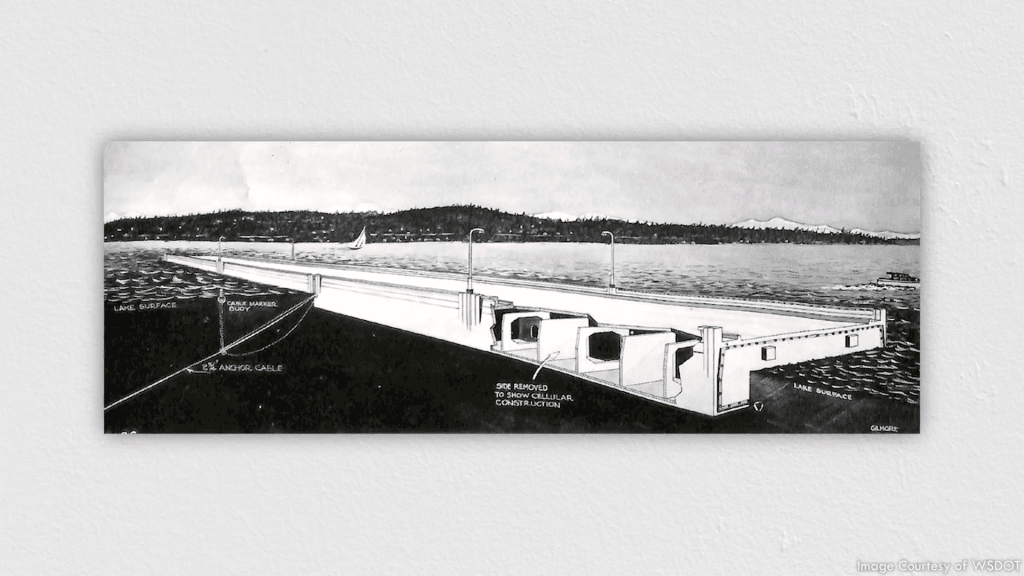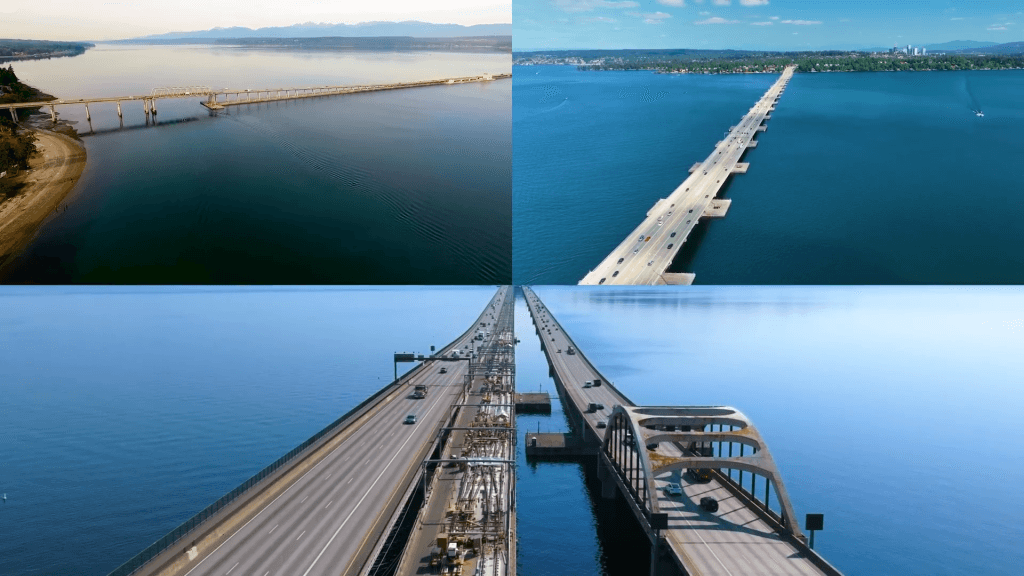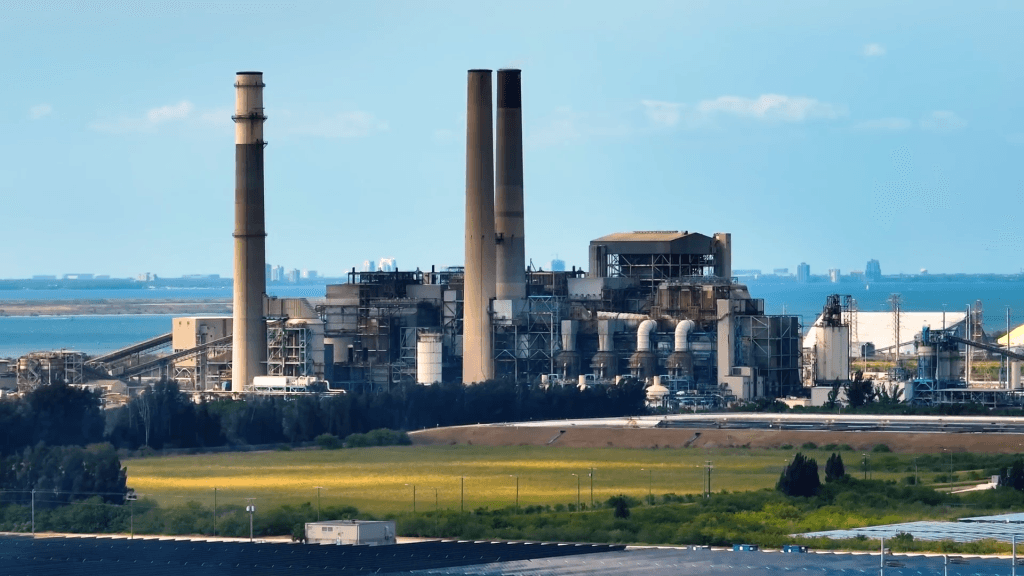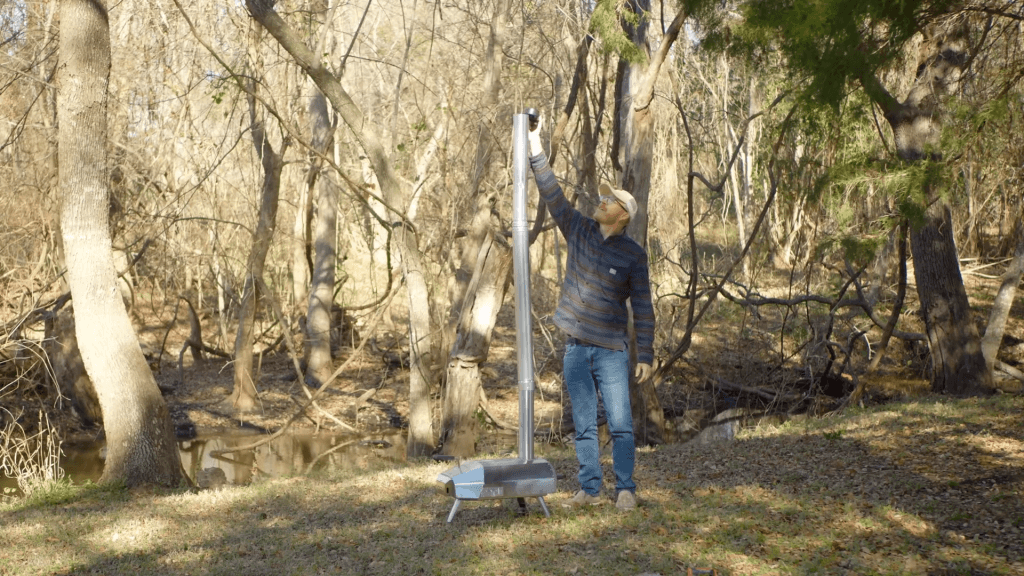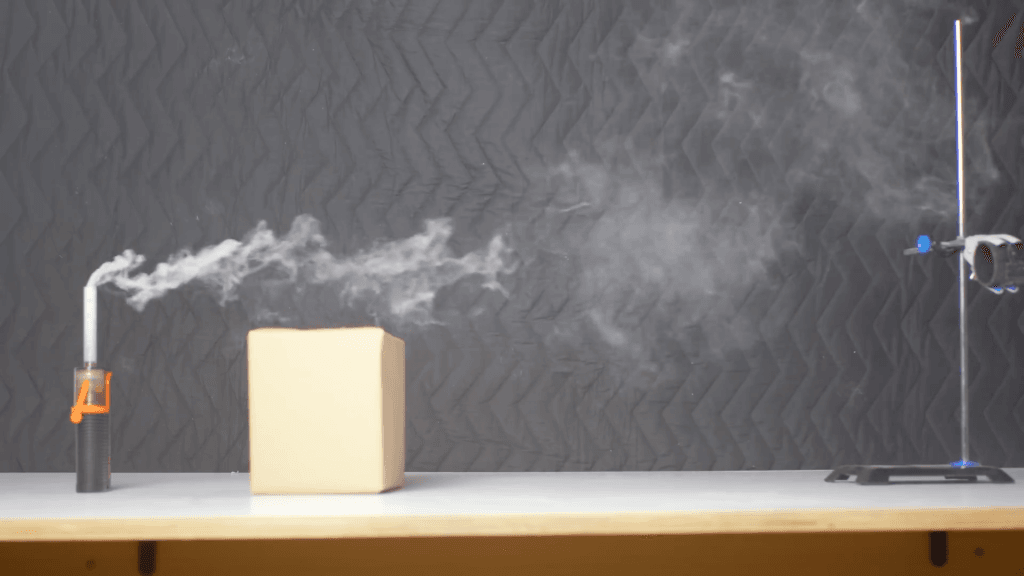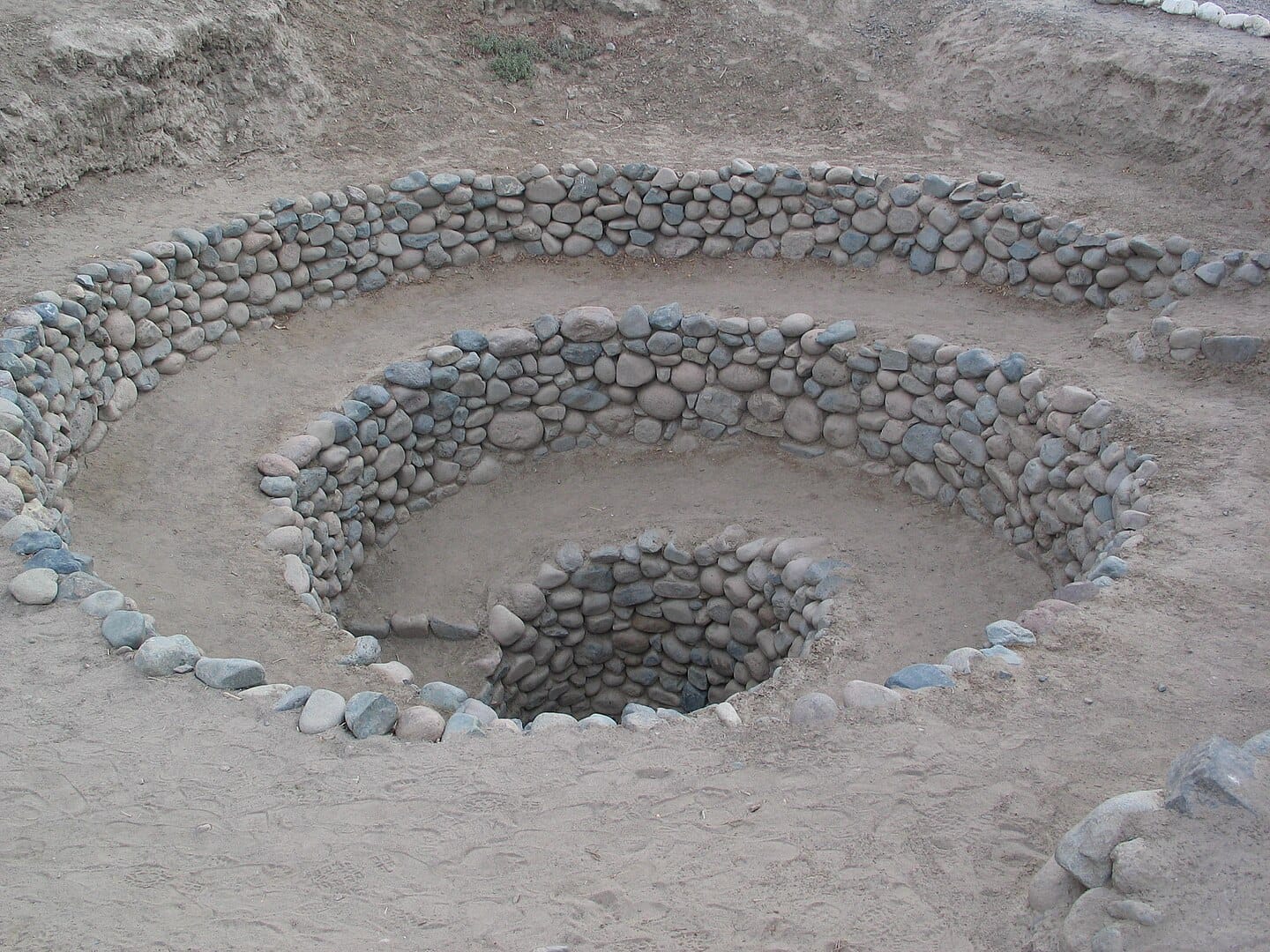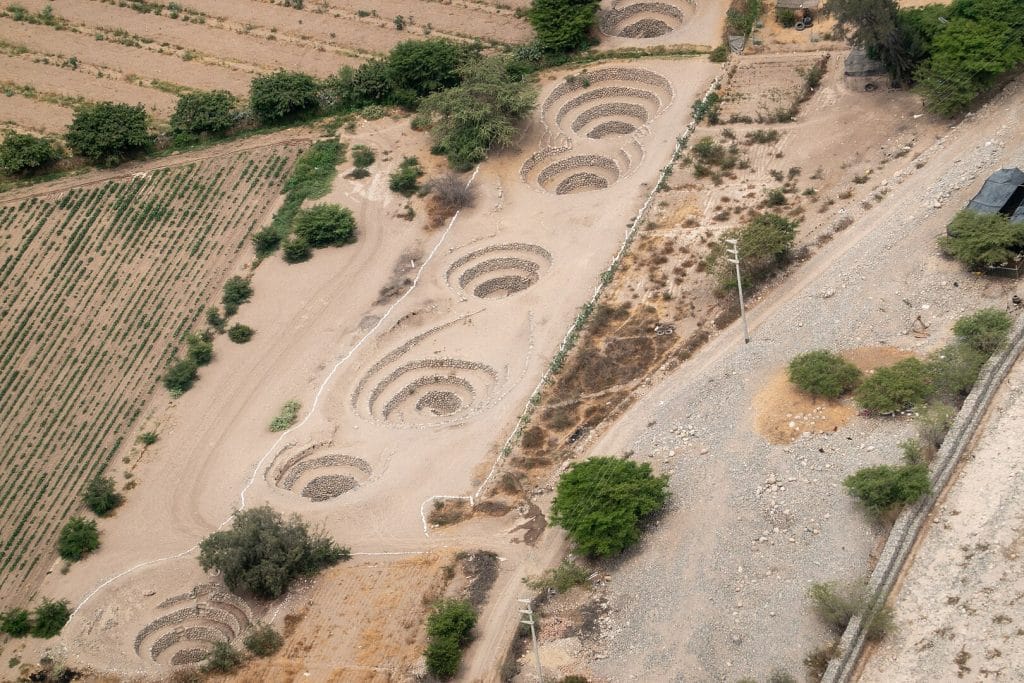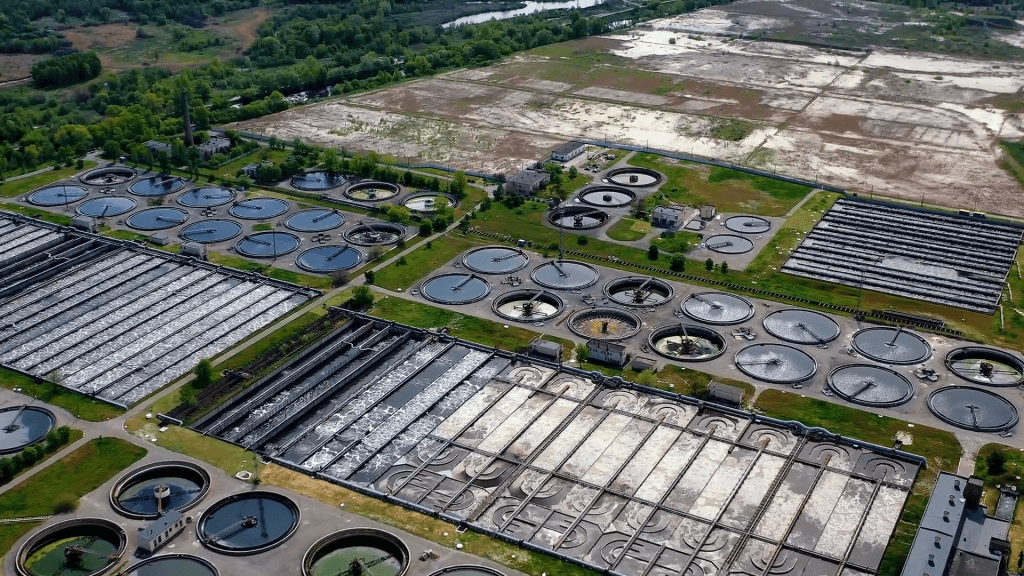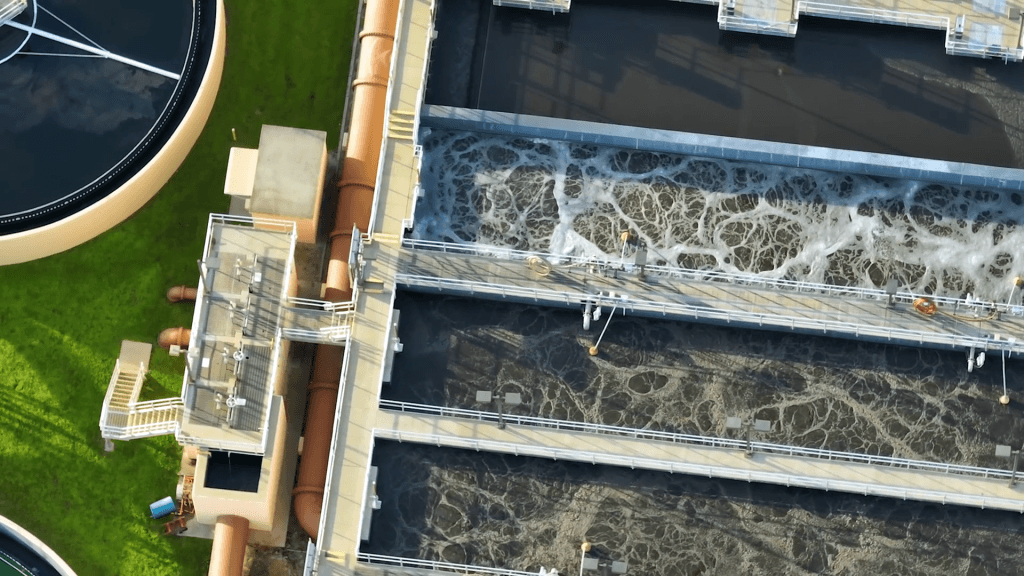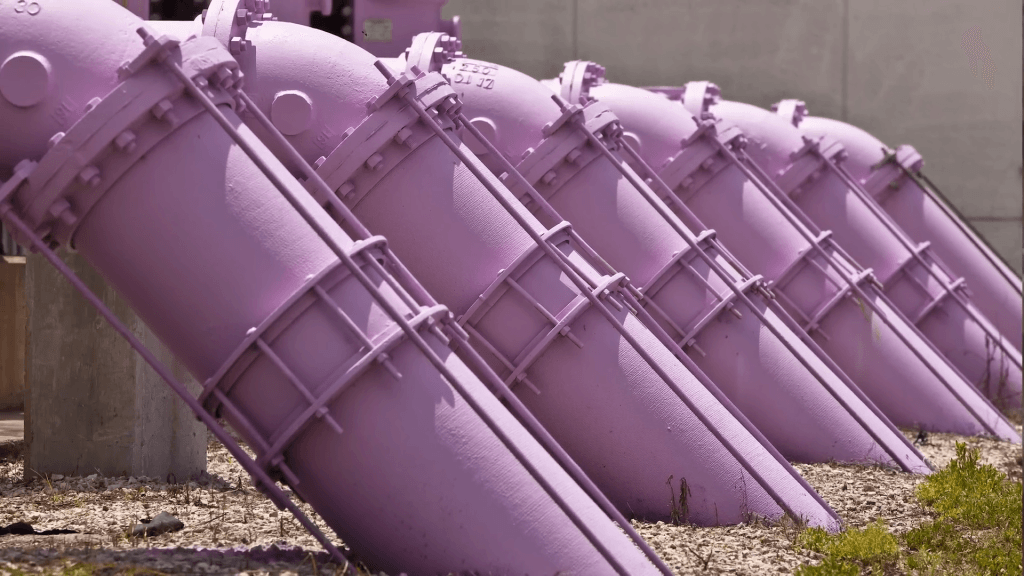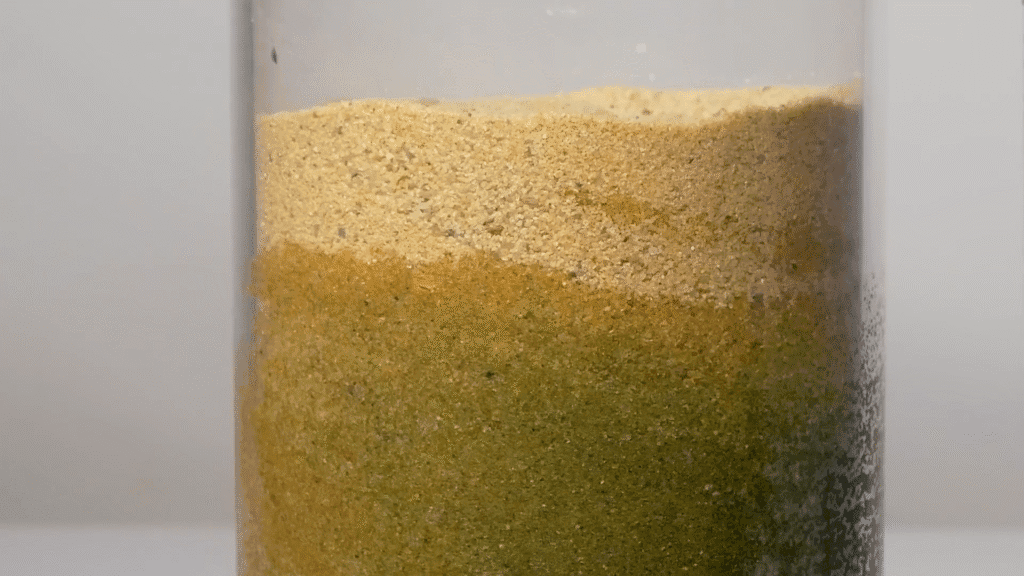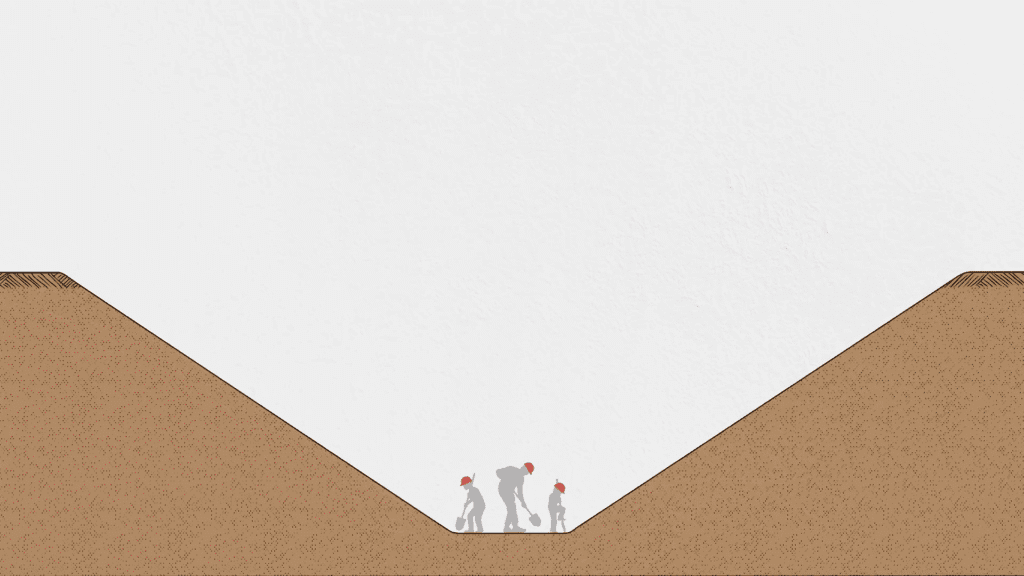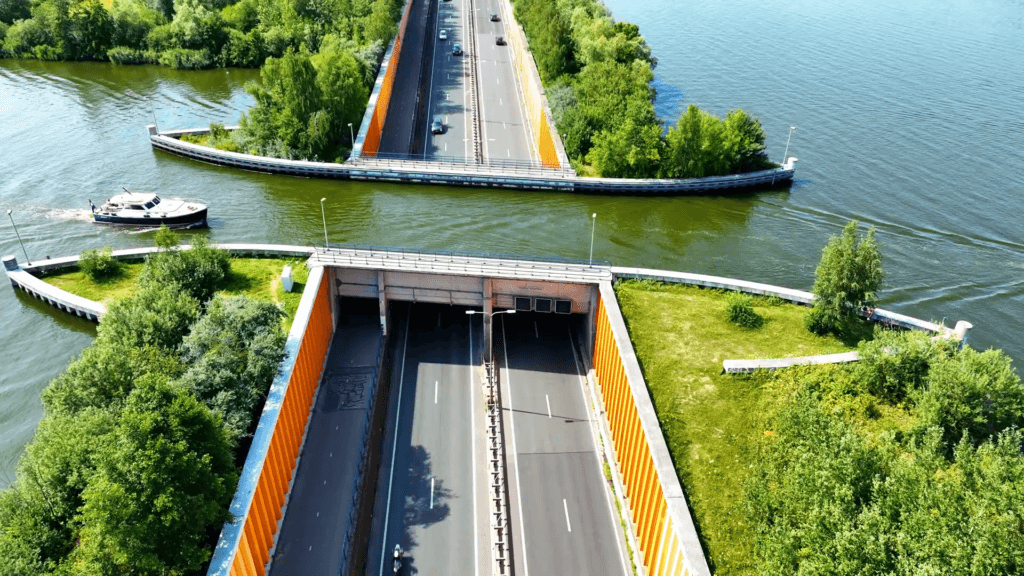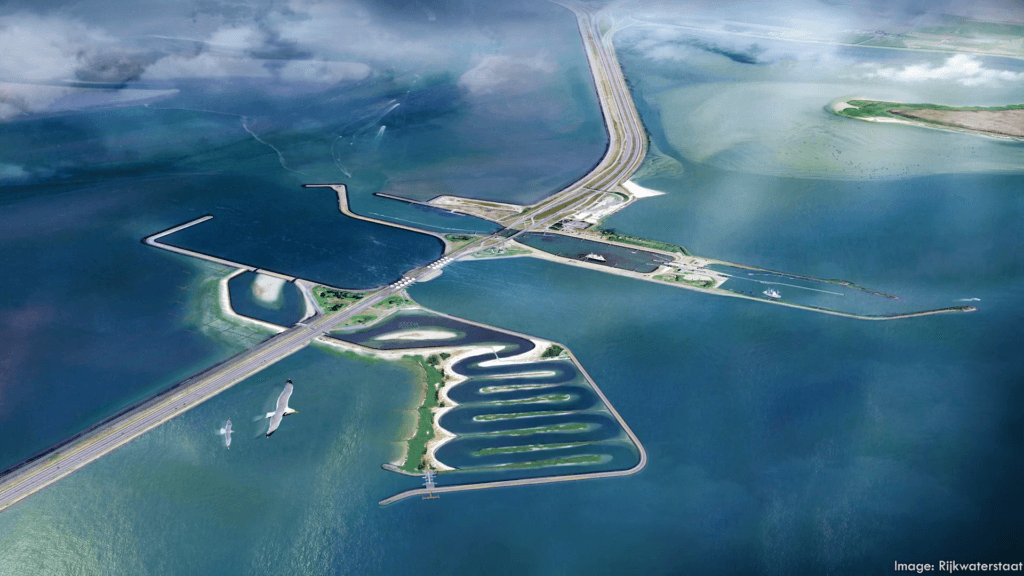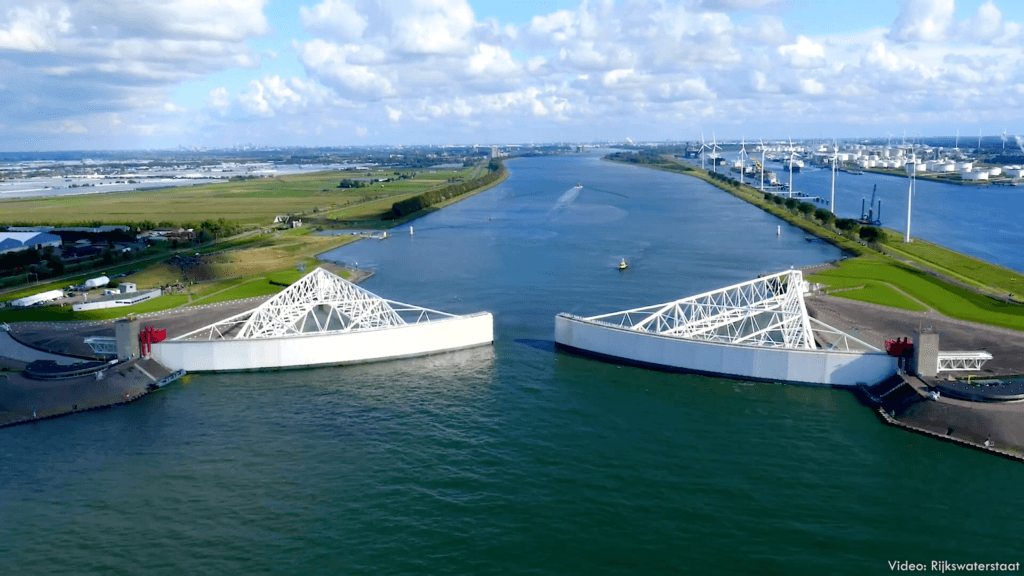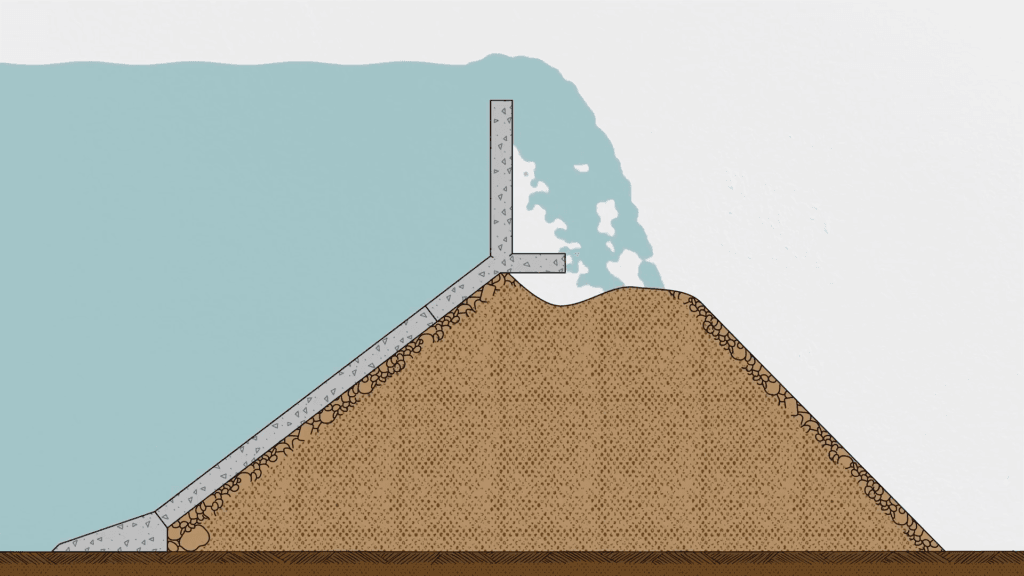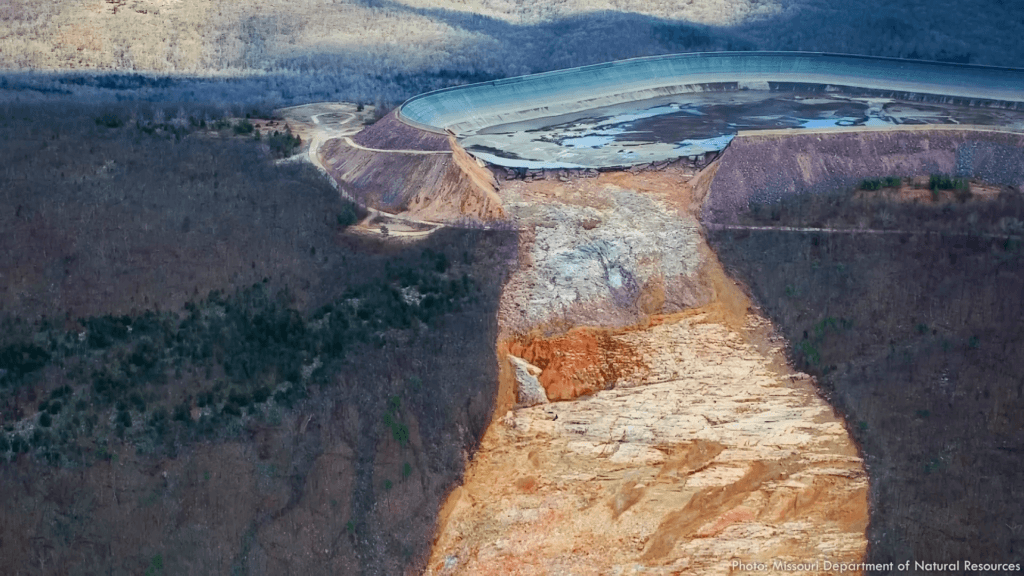For most of history, floating bridges have been temporary structures, often used by militaries crossing water, but over the course of the twentieth century, engineers learned to build more permanent floating bridges. These structures require very particular conditions–calm waters, minimal ice, and so on–but they can be great options for crossing lakes where the traditional anchoring options for a bridge just don’t exist. In this Practical Engineering video, Grady discusses some of the challenges and innovations of these unusual bridges. (Video and image credit: Practical Engineering)
Tag: infrastructure

Dispersing Pollutants via Smokestack
In our industrialized society, pollutants are, to an extent, unavoidable. Even with technologies to drastically reduce the amount of pollutants leaving a factory or plant, some will still get released. It’s up to engineers to make sure that those released spread out enough that their overall concentration does not pose a risk to public health. In this Practical Engineering video, Grady explains some of the physics and engineering considerations that go into this task.
As he demonstrates, taller smokestacks speed up the buoyant exhaust plume (to an extent), which exposes the plume to higher winds, greater turbulence, and, thus, quicker dispersal. But atmospheric conditions and even nearby buildings all affect how a plume spreads. (Image and video credit: Practical Engineering)

The Puquios System of Nazca
The arid Nazca region of Peru is dotted with spiral-shaped indentations, part of an irrigation system that helped indigenous civilizations thrive here before European contact. Although the region’s rainfall varies year-to-year, it never amounts to much. So pre-Columbian Nazcans turned instead to underground aquifers to gather and transport water.

An aerial view of several puquois chimneys near Nazca, Peru. Aquifers in the region slope downward, following the local geology. Puquios builders began by digging a preliminary well in the highlands, tunneling down until they reached the aquifer. Then they built a horizontal tunnel underground, sloping gently downward, toward the location where water was needed. Along that roughly horizontal tunnel, they built additional chimneys, the spiraling mouths of which are seen above. These chimneys are thought to serve multiple purposes. They provide maintenance access to the aqueduct tunnel, and their shape may help funnel wind underground to oxygenate the water and help keep it flowing. Eventually, the underground tunnel would exit into an open trench and a reservoir, providing year-round water for irrigation and personal use.

Although the puquios cannot themselves be dated through usual archaeological means, the current consensus is that they originate from around 500 C.E., with subsequent modifications by both indigenous and colonial inhabitants. Impressively, several dozen puquios are still providing water today. (Image credits: Ab5602/Wikimedia, PsamatheM/Wikimedia, and R. Lasaponara et al.; research credit: R. Lasaponara et al.; via Eleanor K.)

Recycling Water
As regions are stressed by severe drought, communities considering how to stretch their water supply increasingly turn to the option of reclaiming wastewater. As Grady explains in this video, that idea faces both technological and psychological challenges. But neither, it turns out, is insurmountable. (Video and image credit: Practical Engineering)

On the Mechanics of Wet Sand
Sand is a critical component of many built environments. As most of us learn (via sand castle), adding just the right amount of water allows sand to be quite strong. But with too little water — or too much — sand is prone to collapse. For those of us outside the construction industry, we’re most likely to run into this problem on the beach while digging holes in the sand. In this Practical Engineering video, Grady explains the forces that stabilize and destabilize piled sand and where the dangers of excavation lie. (Video and image credit: Practical Engineering)

Dutch Water Works
The Netherlands have a long history of extraordinary public works when it comes to water management. With much of the country’s land lying at or below sea level, massive civil engineering infrastructure is a necessity. In this Practical Engineering video, Grady takes us on a tour of Dutch water works, from the centuries-old techniques that allowed farmers to claim arable land from marshes to the unbelievably massive structures that protect the Dutch coastline from flooding and storm surges.
For the Dutch, these projects, expensive as they are to build and maintain, are cheaper than the cost of inaction, as numerous devastating floods of the past have taught them. Although the goals are often the same — shortening the coastline, protecting land and people — the techniques are constantly evolving, especially as ecological needs of non-human species are taken into account. (Video and image credit: Practical Engineering)

How Cooling Towers Work
Power plants (and other industrial settings) often need to cool water to control plant temperatures. This usually requires cooling towers like the iconic curved towers seen at nuclear power plants. Towers like these use little to no moving parts — instead relying cleverly on heat transfer, buoyancy, and thermodynamics — to move and cool massive amounts of water. Grady breaks them down in terms of operation, structural engineering, and fluid/thermal dynamics in this Practical Engineering video. Grady’s videos are always great, but I especially love how this one tackles a highly visible piece of infrastructure from multiple engineering perspectives. (Video and image credit: Practical Engineering)

The Taum Sauk Dam Failure and Its Legacy
Managing an electrical grid is all about balancing the electricity that plants can supply with the instantaneous demands of consumers. If there’s more power available than people need, it needs to get stored somehow. And for decades, the best way to store that excess supply has been in hydroelectric reservoirs like at the Taum Sauk Dam. These facilities pump water to a reservoir at a higher elevation when there’s extra electrical power available, and, when more power is needed, release that water to run through hydroturbines.
But storing water atop a mountain comes with unusual challenges for dam, and the 2005 failure of the Taum Sauk Dam facility highlights some important lessons for engineers. As Grady lays out in this Practical Engineering video, there was no single mistake that led directly to the dam’s failure. Instead, post-collapse investigations found a series of seemingly minor issues that, together, led to catastrophe. It’s well worth watching, especially for engineers; we could all use an occasional reminder that a “quick stopgap measure” isn’t enough. (Video and image credit: Practical Engineering)

Who Killed the Colorado River?
From its source high in the snowy Rocky Mountains, the Colorado River runs through two countries and five states on its way to the Gulf of California. Or at least it used to. The river hasn’t met the sea in decades. All that water disappeared into a complicated web of poor management, short-sighted policies, and human infrastructure, as this video from PBS Terra explores. Unfortunately, while the details vary, this story is not unique, and many rivers around the world are no longer completing their journey. The good news is that we can still change that and rehabilitate the landscapes we’ve lost. (Video and image credit: PBS Terra)

Building Underwater Foundations
For bridges, deep-sea platforms, and marine wind turbines, engineers have to build secure foundations able to withstand extremely heavy loads. Just how do they do this? One technique — driven piles — is as simple as driving poles into the ground. This is the method medieval engineers used to establish the city of Venice, but the origins of the technique are lost to history. Driving piles compacts the ground around and beneath the foundation, enabling it to withstand far greater loads.
In some applications, hammering piles just isn’t practical. Drilling piles is another common technique. In this method, the drilled hole is reinforced with an outer casing, then concrete is pumped in to harden. Drilled piles will work even underwater, as long as the concrete gets pumped in from the bottom. Then it can push water up and out of the casing without absorbing enough water to change its properties. (Video and image credit: Practical Engineering)

